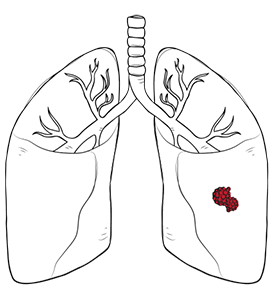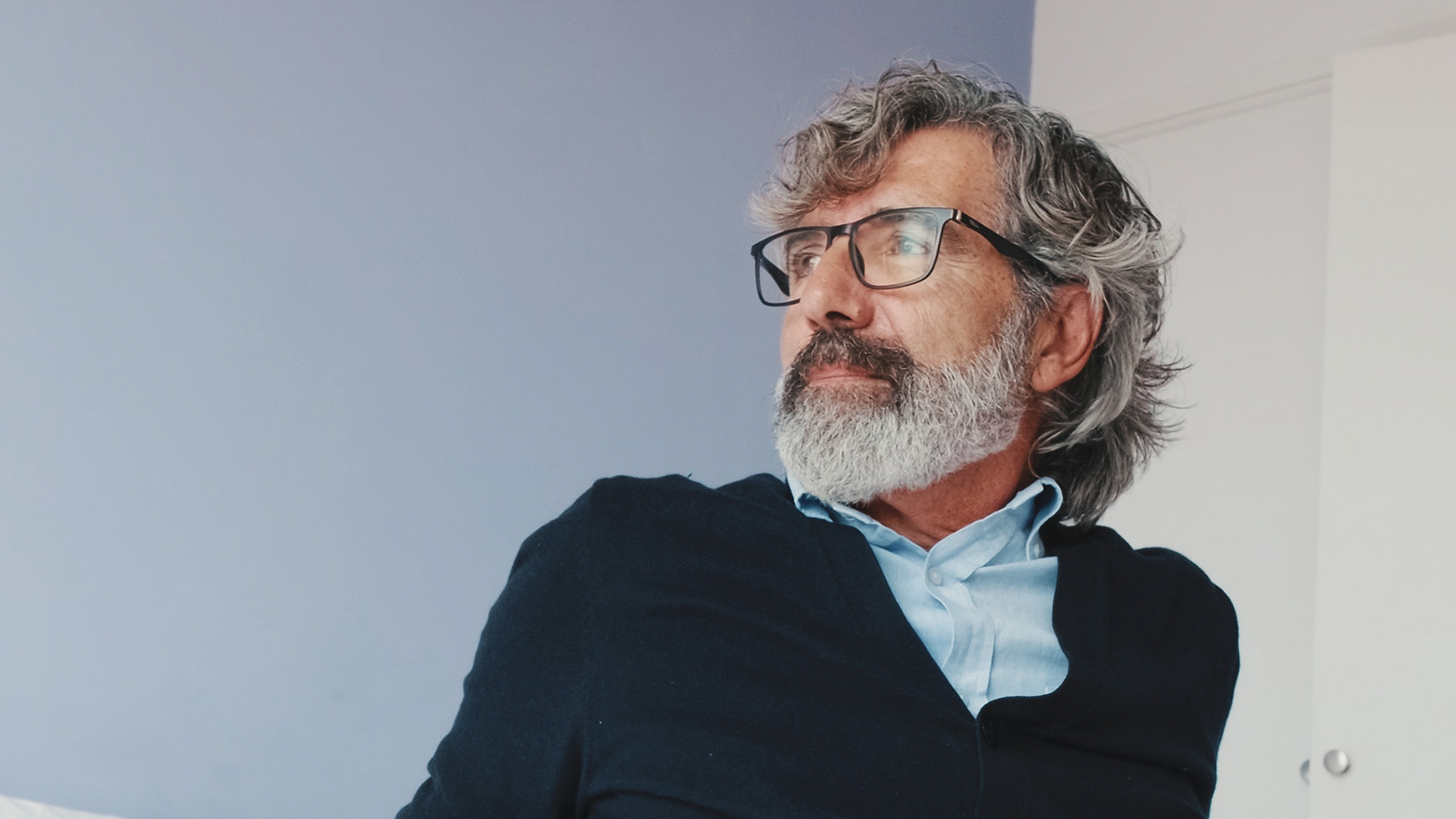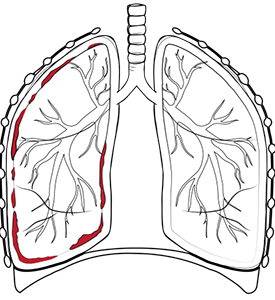

The pleura is a thin membrane that lines the inside of the chest and lungs. Its main function is to protect the lungs and allow for regular respiratory function. The pleura secretes a fluid to lubricate the lungs to allow it to expand and contract with each breath. However, the tissue can become affected by different conditions, such as infections or cancer, which prevents the lungs from functioning properly. To check on the health of the pleura, a surgeon will conduct a pleural biopsy, extracting a section of the pleura to test for any diseases or abnormalities.
A common reason for conducting a pleural biopsy is if there is pleural effusion. This means the liquid being secreted by the pleura is accumulating in the pleural cavity. This excess fluid stops the lungs from expanding fully and causes discomfort, shortness of breath, and sharp chest pains.
Sometimes, pleural effusion occurs without a significant cause. Often it is a symptom of a larger dysfunction. As such, it is common for patients with pleural effusion to undergo a pleural biopsy to determine the root cause of their condition. Other reasons to undergo a pleural biopsy include investigating an abnormal marking on a chest X-ray, ascertaining if a pleural tumour is malignant or benign, or to gather more data after a pleural fluid test.

Neumark surgeons perform a surgical pleural biopsy technique via a minimally-invasive approach. We use the latest technology for your safety and comfort. Our leading approach is via uniportal video-assisted surgery (U-VATS).
U-VATS allows our surgeons to identify the pleural lesion accurately, before extracting and examining it. This is through the thoracoscope, a thin, flexible long tube with a high-definition camera at its end that provides the surgeon with real-time visuals of the pleural space.
Following U-VATS, a tissue sample will be sent to the lab to be tested. Some patients may go through an additional X-ray following the pleural biopsy results. Depending on the health of the patient, and a range of other concerns, the patient may be allowed to go home the same day of the surgery, or may be kept for a longer duration for observation.
After the operation, strenuous physical activity should be avoided for a few days while the body recovers. It is also normal for the area where the extraction took place to be sore or tender as the body heals from the operation.
At Neumark, our surgeons use the latest technology and advanced techniques to ensure your surgery is safe. Like any other surgery, there are potential risks involved. The minimally-invasive approach used by Neumark surgeons significantly reduces the risk of pleural biopsy complications. A specific risk of a pleural biopsy is pneumothorax, where air bubbles collect in the pleural space. This occurs in roughly 4 out of 100 patients. However, the condition often resolves itself shortly after presenting, and is treatable if the condition persists.
This depends on what your condition is. It is not advisable to go for a pleural biopsy with no reason at all. It is recommended only for patients who may have a condition that needs to be better understood. For example, patients with a blemish on a recent X-ray, pleural effusion, or potential cancer should undergo a pleural biopsy to gather information on their condition. In some cases, such as diagnosing a pleural tumour, it may be important to get the biopsy sooner rather than later so that treatment can commence. A pleural biopsy is a minimally-invasive procedure and should not be avoided if there is cause for concern.
This varies but results should be received from our lab in 5 to 7 working days. We understand that this is a stressful period and will work swiftly to provide you with your results, without compromising on the diagnosing process.
Distinguishing between pleural and lung biopsies is essential for the accurate diagnosis and treatment of thoracic diseases. While a pleural biopsy involves obtaining a tissue sample from the pleura, to test for conditions such as mesothelioma and pleurisy; while a lung biopsy requires the collection of lung tissue to assess conditions such as pulmonary fibrosis and lung cancer.
DISCLAIMER: The information provided on this website is for general informational purposes only and is not intended as a substitute for professional medical advice, diagnosis, or treatment. The use of this website does not create a doctor-patient relationship and no medical advice should be inferred or assumed. It is the user’s sole responsibility to seek the advice of their healthcare professionals for any medical concerns they may have and the user should not disregard, or delay, prompt medical advice for any such condition.
Neumark Lung and Chest Surgery Centre benefits from the expertise of a multidisciplinary team led by Dr Harish Mithiran, senior consulting thoracic surgeon at Gleneagles Hospital and Mt Alvernia Hospital.
Neumark is a lung and chest specialist centre with access to leading treatment modalities to achieve the best possible outcomes for lung disease and preventative patient screening.
Our foremost priority is to treat your condition as effectively as possible. Schedule a private consultation today; complete the form below, call, +65 6908 2145; WhatsApp, +65 9726 2485; or email, info@neumarksurgery.com.
Access the latest advice as well as full support throughout your treatment, and during after-care.
Learn how to refer a patient or to joining our physician network of leading providers in Singapore and abroad.
Main Surgery Centre
6 Napier Rd
#02-09 Gleneagles Medical Centre
Singapore 258499
820 Thomson Road
#06-07 Mount Alvernia Hospital Medical Centre A
Singapore 574623
Neumark Lung & Chest Surgery Centre benefits from the expertise of a multidisciplinary surgical team led by Dr Harish Mithiran, a senior consulting thoracic surgeon at Gleneagles Hospital.
With access to leading minimally-invasive treatment modalities for lung disease and chest conditions, our specialists in Singapore work to achieve the best possible outcomes for lung disease. Our foremost priority is to treat your condition as effectively as possible with world-class care.
6 Napier Road
#02-09 Gleneagles Medical Centre
Singapore 258499
820 Thomson Road
#06-07 Medical Centre A
Singapore 574623
© 2025 Neumark Lung & Chest Surgery Centre Pte. Ltd. | UEN 202136971R
Gleneagles Medical Centre
6 Napier Road
#02-09 Gleneagles Medical Centre
Singapore 258499
Mount Alvernia Hospital
820 Thomson Road
#06-07 Medical Centre A
Singapore 574623